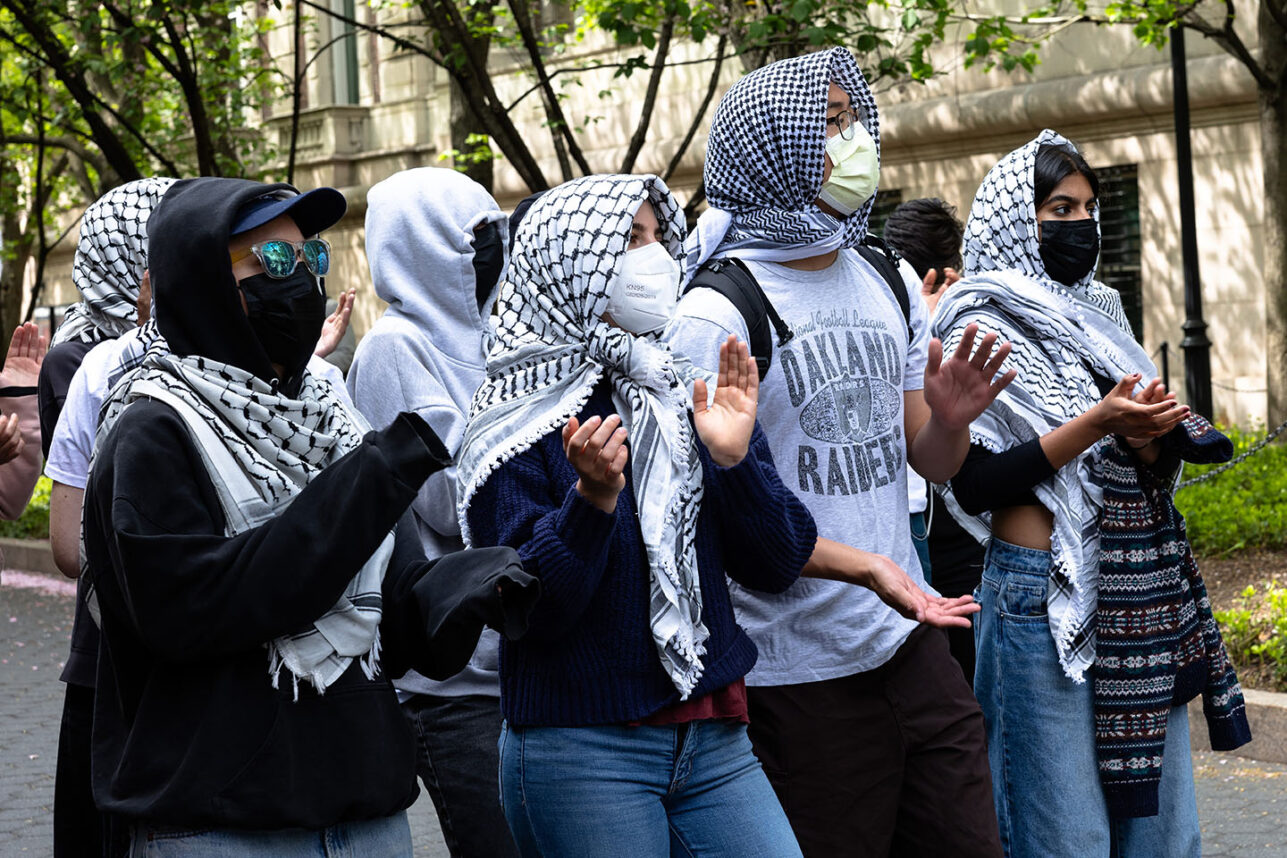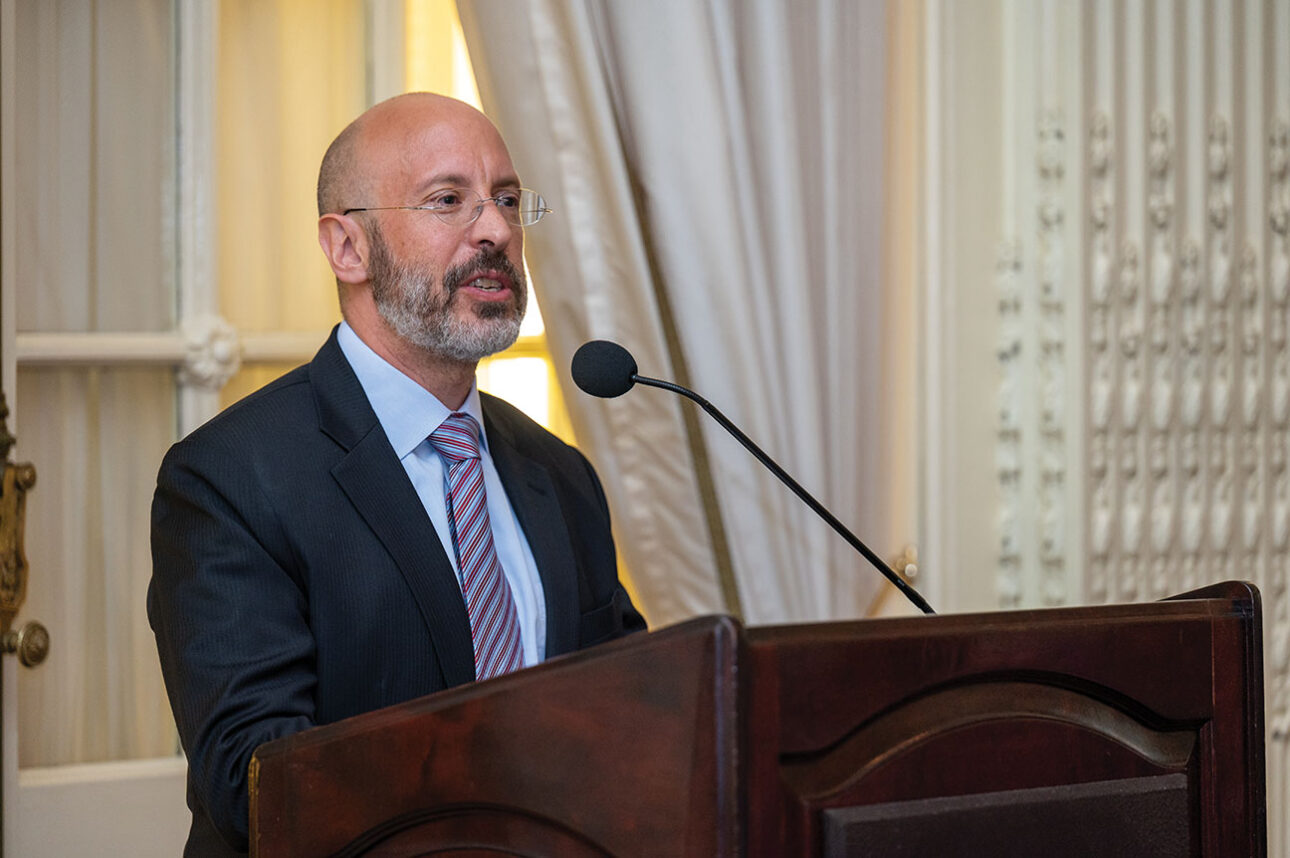A long time ago, in the prehistoric days of pre-Pew-study Jewish community research, I wrote an article about “the mystery of the fifth Jew“. This individual, the “fifth Jew”, is to be found “in almost every sample” when Jewish surveys are conducted. My article mentioned a number of examples. “In a previous AJC survey, 18 percent of respondents said that they felt 'somewhat distant' emotionally from Israel… when American Jews are asked whether the goal of the Arabs is ‘the destruction of Israel’, 78 percent say yes, and 18 percent say no… Nineteen percent said that they would never speak about Israel or defend it in non-Jewish company”. My fifth-Jew article was mostly concerned with the Israel connection, but I was reminded of it as I was reading an article by Tamar Frydman about the “fifth son at the Seder” – the son that “is missing; he is the one that doesn’t even come to the table”.
Frydman refers in her article to the “downward trend in seder participation”. The New York Jewish community study, for example, found that “more households in 2011 never participate in a Seder (14% in 2011, up from 8% in 2002)”. In another article, Steve Lipman listed a number of similar findings about the Seder “losing steam”. The studies still report a high attendance of Jews in the Seder: “The 2013 National Jewish Population Survey: 68 percent. The 2013 Pew Forum report: 70 percent. The 2011 UJA-Federation Jewish Community Study: 69 percent. The Jewish Federation of Atlanta’s 2006 Jewish Community Centennial Study: 62 percent. In California’s East Bay, which has a reputation as a particularly liberal area, a 2011 study found that exactly half of the Jewish community goes to a seder”. Yet all these surveys “share the conclusion that the seder, which ranks with Chanukah candles and the Yom Kippur fast at the top of Jews’ observance list, has lost its drawing power and its status as a not-to-be-missed event.”
Clearly, this is no longer a “fifth” Jew that is missing. Nowadays, about a third is missing. If a third is a lot or a little depends, of course, on one’s expectations, but we clearly see a decline in attendance. “Who’s not going to seders?”, asks the New York Jewish Week article. And it goes on to give the following list: it “includes people who find the seder boring, its readings and rituals without meaning; those who consider the holiday’s theme excessively chauvinistic or paternalistic; émigrés from the former Soviet Union and other once-communist countries who grew up without freedom of religion and never had the chance to attend a seder; people who simply can’t afford to make their own or attend one hosted by a synagogue or another Jewish organization; the isolated elderly who don’t live near anyone who makes a seder; young people who are out-of-town over yom tov and have not received an invitation; singles who feel out of place in a seder’s intensely child-centered atmosphere; and people who say they are too secular or disinterested or burned out to care”.
I find this list lacking, as the reasons for decline are quite obvious and can be easily found in recent surveys. The Pew study shows that there are more interfaith families in the Jewish “community”. It also shows that the group that does not attend a Seder in the highest percentage is the interfaith group. Among Jews married to other Jews the attendance is still sky-high: 91%. But with Jews married to non-Jews the story of decline is evident: about half (54%) of them attend a Seder, while the others don't (the gap in attendance is also evident when the “community” is divided to the Pew-invented categories of Jews “by religion” (78%) and “of no religion” (42%), but this terminology, as I argued elsewhere, is very problematic).
A number of years ago, I wrote an article for Slate about “the Passover test”, in which I tried to analyze the meaning of Seder attendance for interfaith families. “The correlation between the Hanukkah-candle lighting and the Passover Seder – the two most practiced rituals among American Jews – is interesting”, I argued back then. “Hanukkah is more popular for most Jewish groups. The reason is clear: The holiday competes with Christmas. However, the more affiliated the group, the narrower the gap between these two practices. The 'highly affiliated' is the only group in which Seder attendance surpasses Hanukkah candle lighting (96 percent to 94 percent, according to the National Jewish Population Survey). For the intermarried – couples with one Christian spouse – the gap between the two practices is the widest (85 percent celebrate Hanukkah; 41 percent celebrate Passover)”.
We don't have numbers on Hanukkah in the Pew study. But we do have them (and Pesach) in the New York study. 82% and 81% of inmarried couples light candles and participate in a Seder respectively, 52% and 46% of the intermarried do. Interestingly, these two practices are the ones in which the decline from the 2002 study to the 2011 study is the highest – these two, and the category “being Jewish is Very Important in Respondent’s Life”.
This is not a surprise: attending the Seder and lighting the Hanukah candles is the golden standard of minimal Jewish participation. Decline in these two categories must come with a parallel decline in the “important to be Jewish” category. Is it because the Seder is boring, chauvinistic, expensive, and all the other above-mentioned reasons? I don't think it is. Well, it is and it isn't. It is in the sense that these are all good excuses for those who do not want to attend the Seder – it takes an act of carelessness and turns it into an act of conscious reasoning. But it also isn't – because even when the Seder is boring you are not going to skip it if you think it is meaningful. And if it is expensive you'd make the effort and save on something else, except in extreme situations. And if you find it chauvinistic, you can alter the ceremony, reinvent it as many people do, instead of giving up on it. Deciding to quit the Seder altogether is in most cases really a sign that one doesn't much care much about one's Judaism.
And let me suggest another reason for the decline in Seder attendance – and Hanukkah candle lighting too. These are also two Jewish holidays in which the celebration is not as much about faith and God as it is about a people. These are holidays that celebrate two somewhat similar events in which the Jewish people set itself free from the imposition of others – the Egyptians and the Greeks. To feel the real meaning of these holidays one has to feel some connection to a people.
So look again at the Seder numbers and remember, if the family is an inmarried family, the attendance is very high (91%, according to Pew). The decline is because of the following two reasons –
First: The Seder is a long and intense family affair. This means that it is easier to celebrate it when the whole family feels the need to do it – and in interfaith families such a desire would naturally be lower. It also means that when young Jews get married later – as they do today – the relatively low attendance of Jews who are “not married” has an impact on the general attendance (not married Jews attend at 64%).
Second: The Seder marks a national event, and interfaith couples are, understandably, less comfortable about the national aspects of Judaism.
Have a happy Pesach.























 More news and opinions than at a Shabbat dinner, right in your inbox.
More news and opinions than at a Shabbat dinner, right in your inbox.